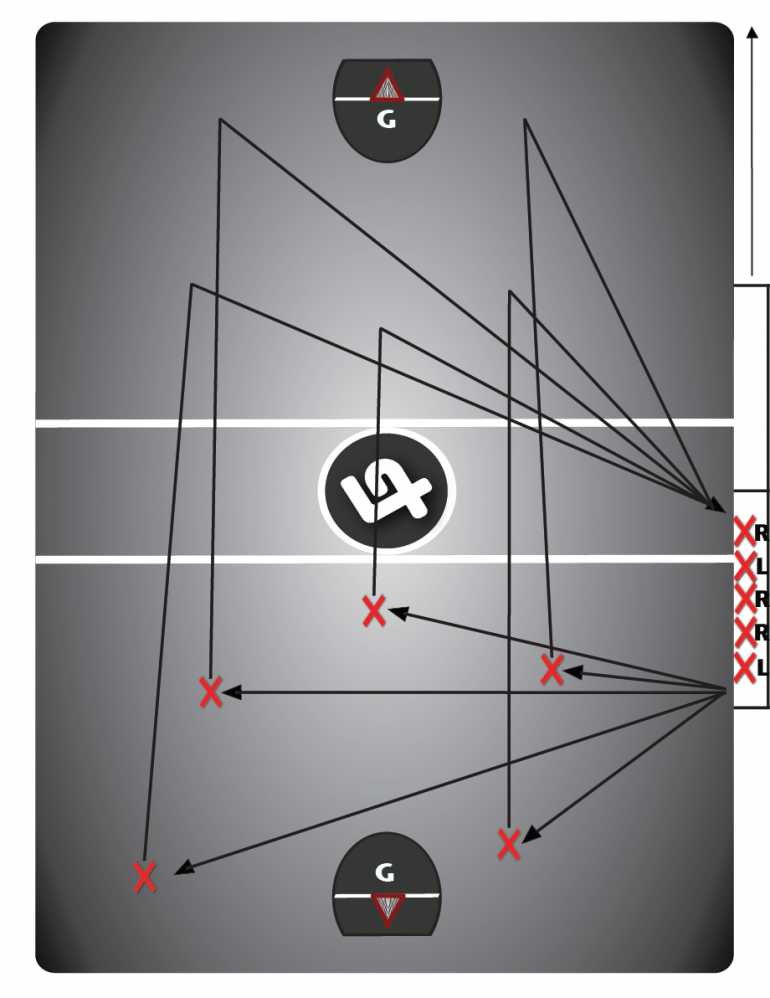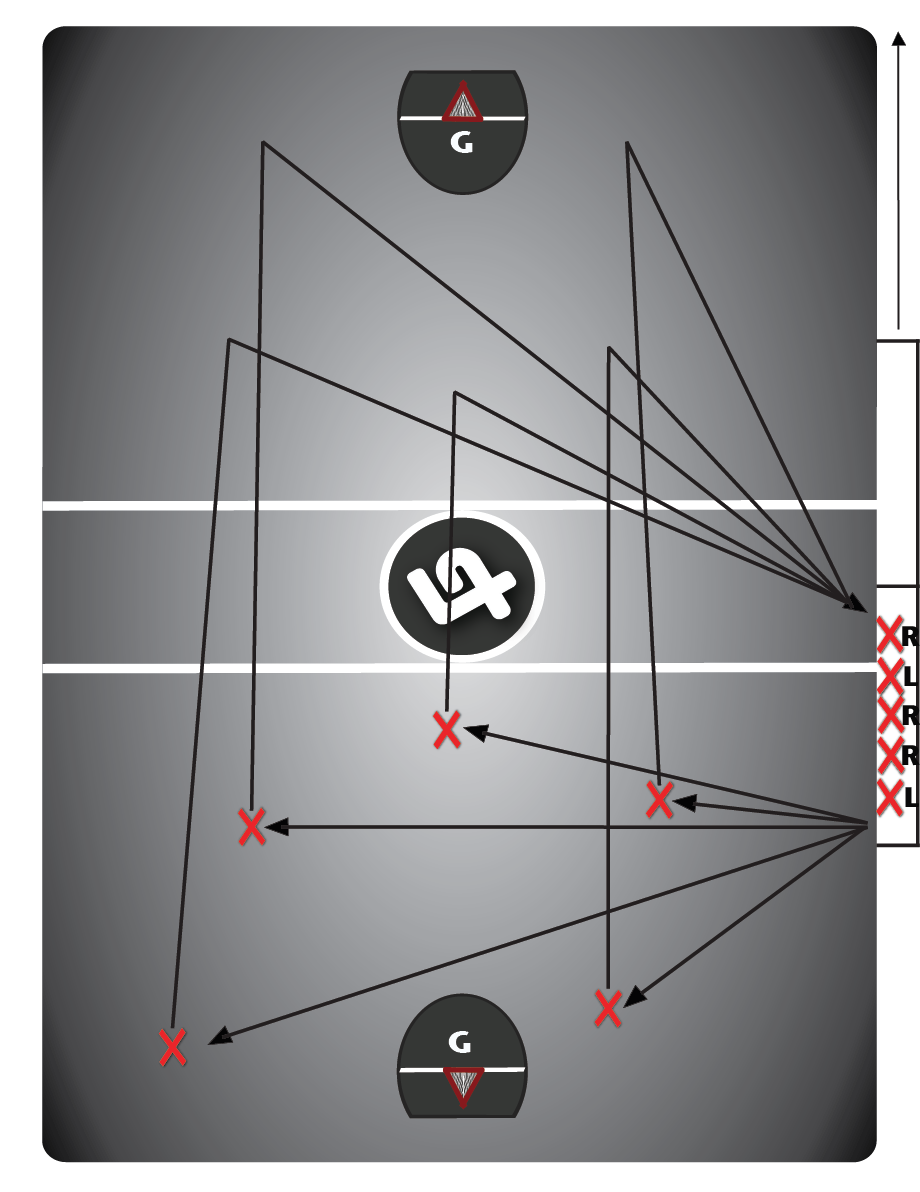
Two-Way System (“Lines”)
 BEGINNER TRANSITION SYSTEM
BEGINNER TRANSITION SYSTEM
- A "two way" transition system is a player substitution method that sees players play both offense and defense, in 5 player “lines” (usually with extra subs), before eventually line-changing. This system has been used for many decades prior to the current trend in Senior/Professional lacrosse of using an Offense-Defense "platooning" style of play. All "Minor" lacrosse players should be fostered using the "lines" system, until beginning to specialize around ages 15-16.
- There are two methods of playing this system and both have to do with line changes, and whether a team has the long-change or short-change in a particular period/quarter.
- On the "short defensive change" (1st & 3rd period - as seen in diagram), coaches will usually first have players run out on defense and then run up and play offense, before “changing;" a Standard Breakout still being required by at least 2 players (not shown in diagram).
- On the "long defensive change" (2nd period - not seen in diagram), teams will usually have players play offense first and then play defense, before line changing; covering against reverse-transition still being required by at least one player. As the "short offensive change," it is an opportunity for breakaways and set-plays coming off of the bench (see Delay & 32).
Coaches may also choose to line change outside of any set pattern (“go with the flow”). For example, if a team has multiple re-sets on offense, or a fast-break from their defense (or the opposing defense). If one player is caught on the floor while the rest of their line has changed, the coach can rectify the situation by having the "sub" play only "one-way" for that shift instead of "two-ways" (in order to keep the lines together).
The obvious drawback with each method is that players are more fatigued while playing either offense or defense, depending on which they had to play first; a fact which should also be weighed for strategic purposes. Playing defense second, for example, not only increases the other team's chance of scoring, but also eliminates the potency of most fast-break opportunities.
Coaches can also make small adjustments within this system throughout the game, depending on variables such as: the strengths of the players, the current situation, whether or not their team has a lead or is losing on the scoreboard, and how tired their players seem to be, as just a few examples. If players seem to be tired, an appropriately timed time-out is usually enough to get players back near full recovery.

Would you like to share your thoughts?
Your email address will not be published. Required fields are marked *
Leave a Reply
You must be logged in to post a comment.
Would you like to share your thoughts?
Your email address will not be published. Required fields are marked *
Leave a Reply
You must be logged in to post a comment.
0 Comments